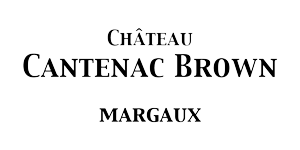Chateau Cantenac Brown, Grand Cru Classé from 1855, in Margaux was founded 200 years ago by a Scottish John Lewis Brown. Recognizable by its spectacular Tudor-style chateau, Cantenac Brown is still family owned today and has announced the construction of a new, unique winery made entirely of raw earth.
Iconic in Margaux, the history of Château Cantenac Brown conceals secrets that we are about to reveal to you. The history of the Château dates back to the end of the 18th century. However, it was not until the beginning of the following century that the Brown family settled there. Thereafter, a succession of families settled there; each one bringing its stone to the construction of a great classified growth. The latter, with a heritage of several centuries, is now spreading beyond the borders of France. Acquired in 2019 by the Le Lous family, Château Cantenac Brown is once again undergoing modernization, notably with the construction of a new raw earth cellar to foster the expression of the power of the earth in our wines.
A succession of prestigious families at Château Cantenac Brown
Grand cru classé of 1855, Château Cantenac Brown has known a succession of great families at its head. First, the Brown of Colstun family settled here in 1806. John Lewis Brown of Colstun, then a Bordeaux wine merchant, bought the estate at auction. Of Scottish origin, he left his name to the estate and the roots of a property that would become one of the most exceptional in the Médoc. The grandson of John Lewis Brown of Colstun, himself called John Lewis Brown, was a key figure for the Château but also for the history of the 19th century. A naturalist painter, his works and correspondence remain engraved in our heritage.
However, the family experienced financial difficulties which forced selling the property in 1843. The property was then sold to Mr. Gromard, banker. A few years later, in 1860, he sold the property to Armand Lalande, deputy mayor of Bordeaux, president of the Bordeaux Chamber of Commerce, and deputy of the Gironde. The property remained in the Lalande family and its heirs, the Lawton, until 1968.
In 1987, the Compagnie du Midi bought the Château. It was absorbed two years later by the Axa group. In 2019, the Le Lous family became the owners of Château Cantenac Brown: an opportunity to reconnect with the family history of the Château and to bring the vision of excellence that accompanies it.
A progressive modernization of the Château
Each family at the head of Château Cantenac Brown has wished to carry its vision, mark the history of the estate and invest for its development in the search for excellence.
In 1855, the Château was included in the classification of great growths requested by Napoleon III on the occasion of the Universal Exhibition. Highlighting the excellence of Château Cantenac Brown, this classification is a guarantee of high quality that continues to shine today on the greatest tables and in the most beautiful cellars.
The name of the Château also evolves over the years. It was not until the arrival of Armand Lalande, in 1860, that the definitive name of the estate was given: Cantenac Brown. The latter also made numerous investments in the Château. Foremost among these was the construction of the famous Tudor-style building that adorns the label of Château Cantenac Brown. The Château’s cellar was built at the same time by the famous Bordeaux architect Ernest Minvielle. However, it was not until the following decade that the second wing of the château was built and thus reached its present form.
In 2019, the Le Lous family became the owners of Château Cantenac Brown. The family then carries the values of excellence specific to the great classified growths in order to further develop the wines of the Château in a permanent quest for perfection. As such, the construction of a new raw earth cellar, with unequalled eco-friendly properties, is intended to achieve an even higher level of precision in the vinification of our wines. Today, it is with this age-old history in mind and driven by our ambition that we put all our energy into our wines and into expressing the power of the earth.


